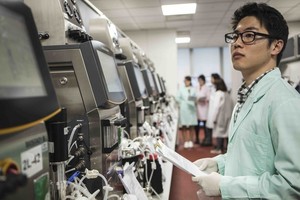A review carried out by researchers from Sandoz describes the inherent nature of biopharmaceutical heterogeneity and discusses modern quality systems and regulatory frameworks used to maintain biopharmaceutical quality and clinical performance [1].
These topics are discussed in historical context, with an overview of rare historical cases where clinical changes have occurred and a discussion of modern tools used to prevent such changes, including advancements in analytical capability, the evolution of pharmaceutical quality systems and the requirement of comparability exercises to evaluate manufacturing changes.
The authors believe this review to be particularly important as concerns regarding the occurrence of clinically meaningful product changes, termed clinical drift, become more prevalent and as misinformation regarding the long-term equivalence and safety of biosimilars are increasingly disseminated. The following key points are highlighted and discussed in this review:
- Biopharmaceutical heterogeneity and variability are inherent in this product class due to cell-based production and the necessity for regular manufacturing process changes.
- Biopharmaceutical variability resulting in clinical differences is extremely rare with only a single verifiable case resulting in adverse events in over 35 years and over 260 products.
- Analytical capabilities and modern quality systems are continually evolving to ensure consistent biopharmaceutical quality. Recent improvements include: (i) Quality by design; (ii) Continued process verification; and (iii) Two tiered reference standards.
- Although the abundance of specific variants may vary, the demonstration of comparability following manufacturing changes ensures equivalent clinical performance throughout the product life cycle.
- Originator and biosimilar biopharmaceuticals employ identical quality systems and regulatory frameworks to maintain consistent quality and clinical performance.
- Physicians and patients can expect the same safety and efficacy from biopharmaceuticals and their respective biosimilars irrespective of batch or production history.
Conflict of interest
The authors of the research paper [1] are all employees of Sandoz or Novartis. For full details of the authors’ conflict of interest, see the research paper [1].
Abstracted by Dr William Christopher Lamanna, PhD, Global Scientific Affairs Manager, Sandoz Biopharmaceuticals, Sandoz GmbH, Kundl, Austria.
Editor’s comment
Readers interested to learn more on analytical characterization of biosimilars are invited to visit www.gabi-journal.net to view the following manuscripts published in GaBI Journal:
Advances in analytical characterization of biosimilars
GaBI Journal is indexed in Embase, Scopus, Thomson Reuters’ ESCI, and more.
Contribute a research or review paper to GaBI Journal – an independent, peer reviewed academic journal – send us your submission here.
Related article
Quality by design for biosimilars
Reference
1. Lamanna WC, Holzmann J, Cohen HP, Guo X, Schweigler M, Stangler T, Seidl A, Schiestl M. Maintaining consistent quality and clinical performance of biopharmaceuticals. Expert Opin Biol Ther. 2018:1-11. doi:10.1080/14712598.2018.1421169. [Epub ahead of print]
Permission granted to reproduce for personal and non-commercial use only. All other reproduction, copy or reprinting of all or part of any ‘Content’ found on this website is strictly prohibited without the prior consent of the publisher. Contact the publisher to obtain permission before redistributing.
Copyright – Unless otherwise stated all contents of this website are © 2018 Pro Pharma Communications International. All Rights Reserved.








 0
0











Post your comment